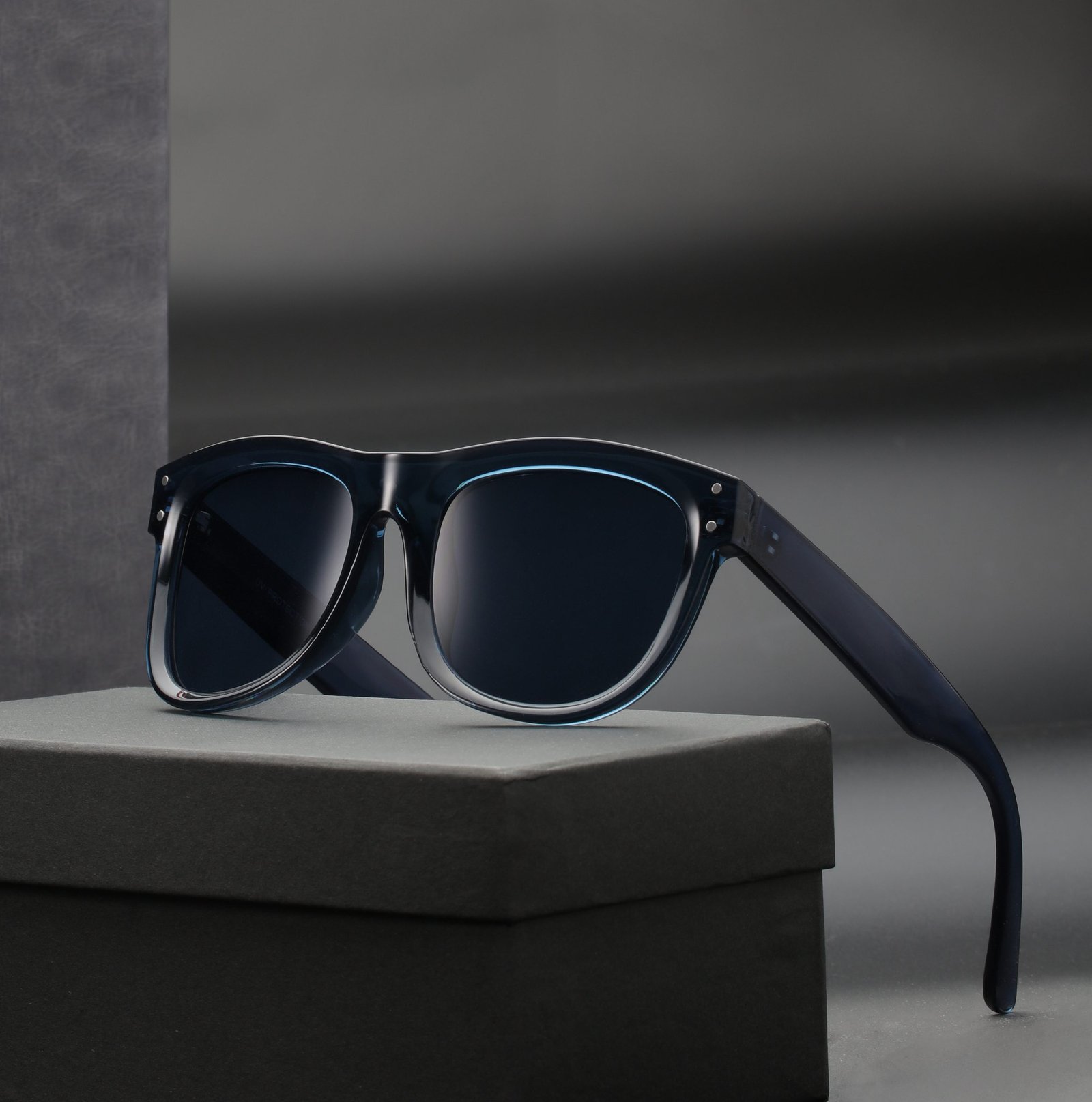
Anti-blue light sunglasses are a type of glasses with special protective functions, and their main functions are reflected in the following aspects:
Filter blue light
Sources and hazards of blue light: Blue light is widely present in natural light (such as sunlight) and artificial light sources (such as electronic screens, LED lights, etc.). Long-term exposure to high-intensity blue light can cause various damages to the eyes. For instance, blue light can penetrate the lens and reach the retina directly, causing atrophy or even death of retinal pigment epithelial cells, thereby increasing the risk of eye diseases such as macular degeneration. At the same time, blue light can also inhibit the secretion of melatonin, affecting sleep quality and leading to problems such as insomnia and frequent dreams.
The principle of anti-blue light: Anti-blue light sunglasses filter out some harmful blue light by adding special anti-blue light materials in the lenses, such as absorbing or reflective blue light absorbers. These materials can selectively absorb or reflect blue light of specific wavelengths, thereby reducing the amount of blue light entering the eyes and lowering the damage of blue light to the eyes.
Reduce glare interference
Glare generation and impact: In environments with intense sunlight, such as snow, water surfaces, and beaches, light undergoes reflection and scattering, resulting in glare. Glare can make the eyes feel dazzling and uncomfortable, affecting visual clarity and comfort, and may even lead to temporary blindness, increasing the risk of accidents.
The function of anti-blue light sunglasses: The lenses of anti-blue light sunglasses usually have a certain polarized light function or anti-glare coating. Polarized lenses can filter out light in the horizontal direction and only allow light in the vertical direction to pass through, thereby effectively reducing glare. Anti-glare coatings can reduce the reflected light on the lens surface, increase the light transmittance, and make the field of vision clearer and more comfortable.
Protect the eyes from ultraviolet damage
Ultraviolet hazard: Ultraviolet rays are one of the most harmful rays in sunlight to the eyes and can be classified into three types: UVA, UVB and UVC. Among them, most of the UVC is absorbed by the atmosphere and does not reach the ground. However, UVA and UVB can penetrate the atmosphere and cause damage to the eyes. Long-term exposure to ultraviolet rays can cause eye diseases such as cataracts, pterygium and electric ophthalmitis.
The combination with anti-blue light function: High-quality anti-blue light sunglasses not only have anti-blue light function but also can effectively block ultraviolet rays. Lenses usually adopt special coating technology or add ultraviolet absorbers, which can block over 99% of UVA and UVB, providing all-round protection for the eyes.
Improve visual comfort
Relieve eye fatigue: Prolonged exposure to electronic screens or activities in strong light environments can easily cause eye discomfort such as fatigue, dryness, and soreness. Anti-blue light sunglasses can reduce the adjustment burden on the eyes, relieve eye fatigue and make the eyes feel more relaxed and comfortable by filtering blue light and reducing glare.
Enhancing visual clarity: In complex lighting environments, such as cloudy days, foggy days, or when indoor and outdoor light alternates, anti-blue light sunglasses can help the eyes better adapt to light changes, improve visual clarity and contrast, and enable the human eye to see objects more clearly.
Protect the eyes from strong light stimulation
Protection in strong light environments: During sunny outdoor activities such as mountain climbing, skiing, and fishing, the light intensity is relatively high, which can easily cause irritation and damage to the eyes. Anti-blue light sunglasses can effectively reduce the intensity of light, allowing the eyes to maintain comfortable and clear vision even in strong light environments.
Adapt to different scenarios: Some anti-blue light sunglasses also have the function of adjusting the color depth of the lenses, which can automatically adjust the light transmittance of the lenses according to different light conditions, adapting to various complex outdoor environments.
